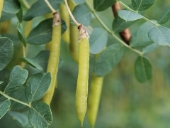




Nicola Stachurski wrote:I am interested too.
I live in an Australian subtropical area that has lost it's Wet Season over the last decade. That means it is now arid- though I doubt many locals would agree. There is always one sizeable flood event every year, it's just that all the other summer storms seem to have disappeared. Being a gardener and a greenie, I've been watching more closely than some.
Actually, one of the signs to me is that, as I have driven around the local area. I have seen 2 dams on 2 different properties that are being excavated to make them deeper. My husband was until recently working as an excavator operator, and has had a number of jobs in the last 6 months digging out dams or installing watering troughs for stock. There are a lot of cattle and horses in this area (even dairies), but I suspect the rainfall will no longer support the same level of stocking. If the weather patterns continue in the same way, it will be interesting seeing it play out in public discussion.
Joe, I would imagine seeing a lot of improvement in vegetative cover after fencing out the horses. Has this happened?




Chris Wang wrote:I would plant some trees in cages to start with. I get very good success planting (seed or saplings) in cages and literally 0% survival without cages or other exclusion. While controversial on this forum, I sometimes use fertilizer to help plants establish quickly.
Check out this thread, if you havn't already. It is a different climate, but much of it will be useful. https://permies.com/t/14353/Reforestation-Growing-trees-arid-barren
Nicola Stachurski wrote:I am interested too.
I live in an Australian subtropical area that has lost it's Wet Season over the last decade. That means it is now arid- though I doubt many locals would agree.
The last few years have been a bit dry, but it was much worse in the early 2000's and many other times in history. While it is possible that a new weather pattern may be starting, the long term trends show it is actually wetter and hotter now.




Jeff Hodgins wrote:I'm not sure of your soil type but if it's very permiable you can dig very big holes (2 feet wide 3 feet deep with straight sides) and plant the tree in it. The sides block wind and sun conserving water. I like to refer to these holes as mandalas because in the Vedas or some Hindu text it says that the Kriva is at the center of each Mandala. Or the entrance to the underworld is at the center of each circle.
 1
1




Joe Banden wrote: Thanks for the link, now I have something to read!
 1
1




Joe Banden wrote:
One thing I wanted to try but didn't have enough stone for, was to create stone piles on the prevailing wind side to both protect from the hot dry winds, and apparently the stone acts almost like a dehumidifier and can create a tiny oasis from the condensation. If you have that type of debris on the homestead I'd be interested to hear if that works as well.
 2
2








 1
1




 1
1




 1
1




Mark Kissinger wrote:
Since you can not be there all the time, you can also spread straw, grass clippings or any organic material on the surface and it will help keep the moisture in the soil thru the dry spells. Even spreading out pallets might help keep bare soil from drying out: experiment; see what works best to make sure your fungal and other soil organisms are kept out of the sun. DO NOT TILL THE SOIL: use a seed drill to plant the seeds. Eventually, your grasses, nitrogen accumulators, and phosphorus accumulators, and the other forbs that you plant will cover your land completely, and the trees that you plant will be able to make use of the regenerating soil. Do not worry, the soil organisms will adapt to the types of plants you are growing.




Nicola Stachurski wrote:
Chris, I don't know where you are in Qld. I am near Ipswich, and a number of people have told me how much drier the summers are now, in particular my father-in-law. He is an old bushie, a green thumb who fed his family on what he could grow and raise. He is 70 now, and his father went to a nearby primary school, so he is very much a local.
I certainly notice a change in the 11 years I have been living on my property.




 2
2




 1
1




Mark Kissinger wrote:Any shrub that you can plant to break the wind will probably be useful. If it is salt-resistant, that sounds like an added bonus. If it is also drought tolerant, I would assume that these shrubs would have deep roots, which is another good thing. You could try to plant the Wayatana (Wayzata? IDK) and see how it fares since it has already found to be useful in mine reclamation (which also involves barren and disturbed soils and landscapes.




Nicola Stachurski wrote:
I can see the tropics are getting wetter, and Australia overall is getting hotter, but I don't see that areas south of Brisbane are getting wetter (though NSW does seem to be in parts).








Chad Zavala wrote:
Question, would it be illegal to transplant saplings dug up from adjacent or nearby BLM land and plant them on my property to speed things up five years or so?
 1
1




 1
1




 1
1





|
incandescent light gives off an efficient form of heat. You must be THIS smart to ride this ride. Tiny ad:
A rocket mass heater heats your home with one tenth the wood of a conventional wood stove
http://woodheat.net
|

